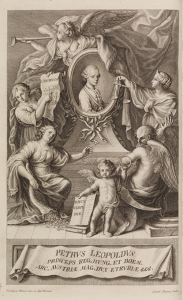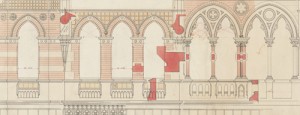Melbourne’s Maritime History Revealed
From the Duke’s and Orr’s Amalgamated Dry Docks Ltd collection, no date, item 1972.0042.0110, unit 59, University of Melbourne Archives
Living in modern times where advanced aviation technology has made travelling overseas and the transport of goods an efficient and relatively effortless process, it is easy to forget that less than a century ago these services were essentially performed by water transport. This mode of transport took a great toll on ships often travelling for months at a time in harsh weather conditions. The University of Melbourne Archives holds the Duke’s and Orr’s Amalgamated Dry Docks Ltd collection, a fascinating record of the engineering, maintenance and repair business of the maritime industry in Melbourne.
Today the old Duke’s and Orr’s graving dock at Clarendon Street, South Wharf houses the famous Melbourne icon, the sailing ship Polly Woodside. The dock shares a rich history in Melbourne’s maritime activity, having docked, cleaned, painted and repaired thousands of ships including those affected by the battles of wartime. It is also of historic significance in the field of engineering due to the fact that its wooden walls remained during reconstruction at the turn of the century, making it the last timber walled dry dock in Australia, and of its size, possibly one of the last in the world. This is said to be in part due to the choice of Australian Eucalypt whose timber is outstanding for strength and durability.
The collection encompasses records dating between the years 1878–1975 consisting of a variety of documents including minutes, accounts, time books, correspondence, share registers and other company related documents. Time books recording employee wages reflect the era’s economy and industry wage standards while correspondence with employees, insurance companies and medical practitioners regarding injury and accident reports provide an interesting historical understanding of work safety practices (or lack of) and protection in the event of workplace injury. Needless to say, there were a lot of slips and spills! In addition correspondence with Melbourne Harbor Trust, Lands Department, Customs Collector, Federal Income and the Tax Department provides details of Melbourne’s port operations. Docking registers, time books and cleaning books all list names of ships docked at Duke’s and Orr’s Graving Yard, linking employees to these jobs at certain dates. Along with the National Trust Library in Victoria, the Duke’s and Orr’s Amalgamated Dry Dock’s Ltd collection also includes a number of copies of published Registers of Australia and New Zealand Shipping.
An assortment of photographs provides a visual record of Duke’s and Orr’s and Melbourne’s maritime activities, depicting staff at work and posing for group shots, the immense size of the ships, impressive engineering machinery and the mammoth task at hand to repair the damaged ships. Visual records of the Yarra Bank serve as a rich insight into the history of Melbourne’s once close proximity between the CBD and its bustling port facilities, some featuring horse and carts along the surrounding roads.
The Duke’s and Orr’s Amalgamated Dry Docks Ltd collection is listed online and searchable via the University of Melbourne Archives catalogue, http://gallery.its.unimelb.edu.au/imu/imu.php?request=load&irn=110337&ecatalogue=on&view=details. Digitising some of the more fragile and significant records is proposed for the future. Duke’s and Orr’s Amalgamated Dry Dock’s Ltd did business with many prominent firms in Melbourne for which the University of Melbourne Archives also holds records, including Huddart Parker, J.B. Were and Son, Stock Exchange, Inglis Smith and Co. and McPhersons Ltd.
(Georgina Ward)





